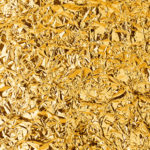Telling the difference between brass and gold isn’t easy, especially if you aren’t familiar with precious metals. What may look like an expensive golden piece of jewelry may be brass – an alloy of copper and zinc. While both metals are lovely to look at, there are significant differences between them, mostly in price, oxidation, density, and purity rating.
To understand brass vs gold, we need to take a closer look at these two metals.
What Is Gold?
Gold is an expensive precious metal, rare in nature, and identifies with wealth, prestige, luxury, and quality. It has a bright yellow appearance and is known for its resilience. You can shape it in any way, without breaking or damaging the metal.
Gold is found in nature as a free metal. It is mostly used in the jewelry industry and as an investment asset.
How Do You Identify Gold?
Selling, buying, and processing gold into jewelry have become very profitable industries. Russia, China, and Australia are the top producers of raw gold bullion, the best raw material for making jewelry.
Unfortunately, the impressive profitability of this business has gained the attention of some dishonest people; people who know how to combine inexpensive metals and shape them to appear like pure gold.
If you want to avoid becoming the victim of investing in fake gold and losing a lot of money, it is good to know a few tips to identify real gold.
When identifying gold, you first need to determine if it is new or old gold. To the untrained eye, gold products look the same and only differ in color. However, there are more significant differences which we’ll discuss below.
- New gold: Refers to gold products, manufactured or produced after purifying or refining the raw gold bullion. You may notice new gold on display in top luxury jewelry stores.
- Old gold: Old gold is mostly products made from recycling old jewelry pieces or combining old jewelry with war gold. When compared to new gold, old gold is cheaper because it requires less production time. Some dishonest dealers make high profits by selling old gold at the price of new gold.
- Fake gold: No product is made from pure gold because it won’t maintain its original shape. Most fake gold products are a combination of pure gold and other metals.
Here are a few ways to help you identify fake gold and prevent you from purchasing imitation replicas.
- Contrast color: One of the easiest ways to separate real gold from fake gold is to analyze the color. A close inspection of the metal will help you identify whether the golden color differs in some places.
- Cross-section: No matter how good the forger is, they can only color the surface, excluding the angles. By breaking it up, you will discover certain irregularities that indicate it is fake gold. Noticing various colors after breaking the product up is a red flag that you own a fake product.
- Magnet test: Gold is non-magnetic; therefore, exposing a gold product to a magnet is an excellent test to discover whether you’re dealing with real gold. If the magnet attracts the gold, the product is fake.
What Is Brass?
Brass is not a pure metal like gold – it is an alloy of 67% copper and 33% zinc (the percentages may vary). It looks similar to gold and has a similar yellowish color, and it is sometimes used in decorations and jewelry. Due to the presence of copper, brass shows antimicrobial and germicidal properties.
In addition to the jewelry industry, brass is also used in the music industry. It has excellent acoustic properties, which is why tuba cornet, trombone, trumpet, and horn contain brass.
How Can You Identify Brass?
Brass is not a fake gold; it is an alloy that consists of copper and zinc. If the product contains more copper, it will give a more yellow tone, while more zinc provides a whiter tone.
Determining if a product is made of brass is pretty straightforward. Brass items usually are yellow, so if the metal doesn’t contain a tint of white-yellow or dull-yellow, you can generally rule them out. You can also look for signs of wear and tear. Real brass will stain, and fake brass will rust.
Like gold, brass is non-magnetic. If a magnet sticks to your brass, it is because the brass item consists of other metals. A magnet may sometimes stick to the brass plate due to the iron metal underneath it.
Brass vs. Gold: What Is the Difference?

Although they have a similar appearance, brass and gold are two completely different metals.
One key difference is corrosion. Tarnishing is a part of the corrosion process and often occurs on the surface of metals. The process occurs after extended exposure to the air (water, dirt, and bacteria can also lead to some levels of corrosion in metals). Gold is a non-reactive metal, meaning it won’t ever tarnish, regardless of how long it is exposed to air or other elements. Fake or alloyed gold may tarnish but little. Brass will degrade, and the color difference will be eminent.
Another difference is brass and gold’s reaction to acid. Some acids can react with gold, but most show no unusual reaction. Brass, on the other hand, is reactive with various acids. An excellent way to distinguish brass from gold is to use the acid test.
Put one to two drops of nitric acid on the product you want to test. If there is no reaction, the product is gold. If you see a green, smoky, and fizzy reaction, there is likely copper in the gold you are testing. A creamy, milk-like reaction means you have a gold plating over sterling silver.
If this test is not enough to determine if the object is gold or brass, grab a scale to measure its weight. Gold is significantly more dense, weighing over twice as much as brass.
Some gold items have a karat rating or some type of marking stamped into them. If you can see a mark or karat rating, it means the product is 100% gold. Brass products won’t have any sign or rating.
Gold is also a softer metal than brass. If you scratch it across a ceramic surface, it will leave streaks of gold. Brass is not so soft. If you scratch it on the same ceramic surface, it will leave black marks.
To sum up, here are some of the main differences between brass and gold.
- Appearance
Gold appears shinier and has a bright yellow appearance; brass has a slightly duller yellow color and does not have the same vibrant color as gold. The color of brass will vary due to the percentage of copper and zinc.
- Rusting
Gold doesn’t show rusting and is never susceptible to tarnishing; brass is an alloy that shows rust or stains.
- Oxidation Reaction
Gold doesn’t show any oxidation reaction; brass is more sensitive. Over time, brass will show an oxidation reaction when exposed to air, water, dirt, or bacteria.
- Density
Gold is more dense than brass.
- Purity Rating
Gold has a karat or purity rating that implies how pure the metal is. 100% pure gold is 24K gold. There is no karat or purity rating for brass items.
- Melting Point
Gold has a higher melting point than brass. Gold’s melting point is 1.064 °C, while the melting point of brass is between 900-940 °C, depending on the composition.
- Price
Gold is a more expensive metal than brass. The current price of brass is $1.25-$1.92 per pound, while the price of gold is $1,913 per ounce.
- Currency
Gold is used as a currency for trading and investing, and brass is not.
- Usage
Gold is mostly used in the jewelry industry, while brass is used predominately in the music industry.
A Final Word
For hundreds of thousands of years, gold has been used for currency, jewelry, and trading. Although brass has a gold-like appearance, it is nothing compared to gold in terms of historical value, corrosion resistance, and density. Gold and brass have specific uses in today’s world. However, before investing in a piece of jewelry or gold bullion, it’s imperative to determine whether it is real gold or brass.
We hope you now have a better understanding of brass vs. gold. If you are eager to learn more, don’t forget to check out our blog, where you can learn more about gold as a precious metal, how to invest in gold, how much a gold coin is worth, what is paper gold, and much more. Our blog features exciting topics suitable for anyone with or without investing experience.
You can also subscribe to our newsletter and get early access to our new blog topics each week.
For more information, contact us today. We will address your questions or connect you with a professional Gold IRA Partner, who can introduce you to gold investments and portfolios.





